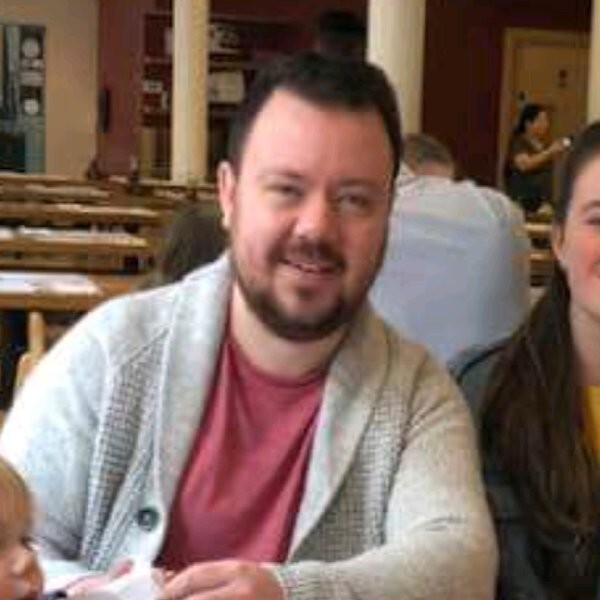“Why do you want this job?”
It’s probably the most standard interview question of all, but it’s one that I had no difficulty answering.
“I want this job because I love user experience design. It’s what gets me out of bed in the morning. When I get home, I love telling my kids what I’ve been doing that day. Feeling in some way that you’re genuinely helping people is awesome, and I love solving problems.”
There was a lot of truth in how I answered that innocuous question. I imagine this is how many UX professionals feel about their jobs actually, given how passionate we are all about the work we do.
But a lot of time has passed since that interview. Years, in fact.
The UX industry has, for the most part, remained the same. We’re still all problem solvers at heart with an affinity for chatting with users to understand what makes them tick. But there’s also something undeniable lurking in the background too. Fatigue.
There’s a noticeable trend of disconcerting chatter if you know where to look. If it’s not around the water cooler or the 1:1 with the manager, it’s on Reddit, Twitter, and Medium. A growing number of designers appear to be unhappy.
Before you dismiss this as another article adding to despairing discourse, pause and reflect. Have you noticed the murmurs on Design Twitter? Maybe you’ve ventured into the depths of r/UXDesign on Reddit, to be greeted with more negativity rather than optimism.
The undercurrent is undeniable; something isn’t quite right.
But why is this happening? What’s pushing UX designers to the brink? Could it be the relentless pressure of meeting unrealistic deadlines? The constant juggling act between business demands and user needs? Or is it the ceaseless sprint to stay in step with emerging technologies while delivering remarkable user experiences?
Sara, an old colleague of mine, aptly put it like this, “It’s mentally exhausting, and it has definitely led to me feeling ‘burnt out’. I just wish my colleagues would understand how valuable UX design can be and give me the support I need to do my best work. It doesn’t help that there’s little confidence in the job market either.”
The very qualities that make UX design exhilarating—the dynamic pace, and the ever-shifting landscapes—can also make it exhausting. Try keeping up, or doing your best work, if mentally you’re not in the right place. Try concentrating on the job if you’ve just got the news that an entire team has been let go.
The news of layoffs in the tech industry, as well as the proliferation of AI, is no doubt making designers shift uncomfortably too.
Sara isn’t alone, and her sentiments resonate far and wide.
A Mental Shift
First and foremost, some things are easier to influence than others. Office politics, stakeholder involvement, and research methods, yes. External factors such as economic decline, not so much. With that said, we should only expend our efforts on the outcomes we can change – anything else is a waste of worry, as my grandmother would say.
So, how do we shift this narrative within ourselves, within the team, or the company as a whole?
How do we take control of what we can, and turn the tide of exhaustion and burnout into a tide of rejuvenation and fulfillment? Start small.
“The key to creating long-term change, Arnold says, is to set smaller but winnable goals that then lead to a pattern of sustainable habits.” – Forbes
From personal experience, effective storytelling helps. Taking the time to share research stories, to articulate the value we bring, can go a long way. I’ve always felt most secure, and valued, in roles where I’m able to freely articulate what I bring to the table.
But let’s be real; it’s easier said than done.
It requires a mix of confidence, finesse, and humility. This can at times be a tall order for an introverted designer like myself.
Imagine this: You’re in a boardroom, surrounded by stakeholders who hold the fate of your design in their hands. How do you convince them? How do you make them see that UX design isn’t just an embellishment but an investment?
Storytelling has always worked for me. As you present your case, weave in examples of how UX design has transformed past projects, enhancing user experiences and boosting customer satisfaction. Sprinkle in metrics that matter, like improved engagement or reduced user complaints. This isn’t just data; it’s the soul of your argument.
The work you’ve done, can you quantify it in monetary terms?
But storytelling isn’t just about the past; it’s about the future. Paint a vivid picture of how UX design can identify and remedy pain points, fostering brand loyalty and driving customer retention. By narrating these stories, you bridge the gap between design and business, capturing the essence of why UX matters.
Forging alliances with developers, project managers, and anyone who can amplify your cause. Together, you create a symphony of understanding, a chorus of voices championing UX across the organization.
But remember, even with allies by your side, you’re not invincible. Burnout can still cast its shadow. It’s crucial to plan wisely, set realistic timelines, and know when to lean on your teammates. Share your challenges, divide responsibilities, and tackle obstacles as a collective force.
“Self-care? It’s not just a buzzword. Think of it as your secret weapon against any nagging feelings of isolation. Taking a walk, binging your favourite show/podcast/book, or just zoning out to your favourite tunes—it’s like a mini vacation for your brain.” – We Are Founders
And when the weight of the world feels too heavy, don’t shy away from seeking help.
Vulnerability isn’t weakness; it’s a bridge to growth. Reach out to mentors, managers, or mental health professionals if needed. Remember, your well-being matters more than your design output.
I’m convinced that burnout isn’t the finale; but a subplot. Some designers are simply in a bit of a rut right now, but by nurturing a culture of communication, collaboration, and self-care, we can reshape the narrative.
It’s not about escaping challenges but embracing them with renewed vigour.
Let’s design not just for the user but for ourselves. Let’s craft experiences that uplift, inspire, and safeguard our well-being. Through collective effort and shared understanding, we can forge a path where passion thrives, and burnout becomes a tale of the past.
“Why do you want this job?”
My reasons haven’t changed – I’d just like the freedom to do my best as a designer.





